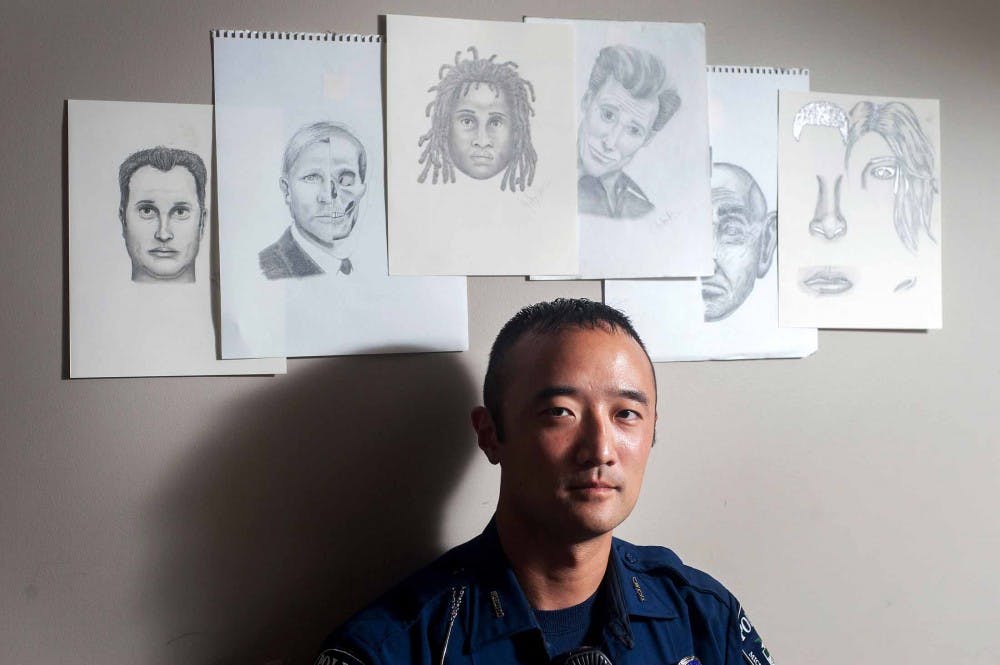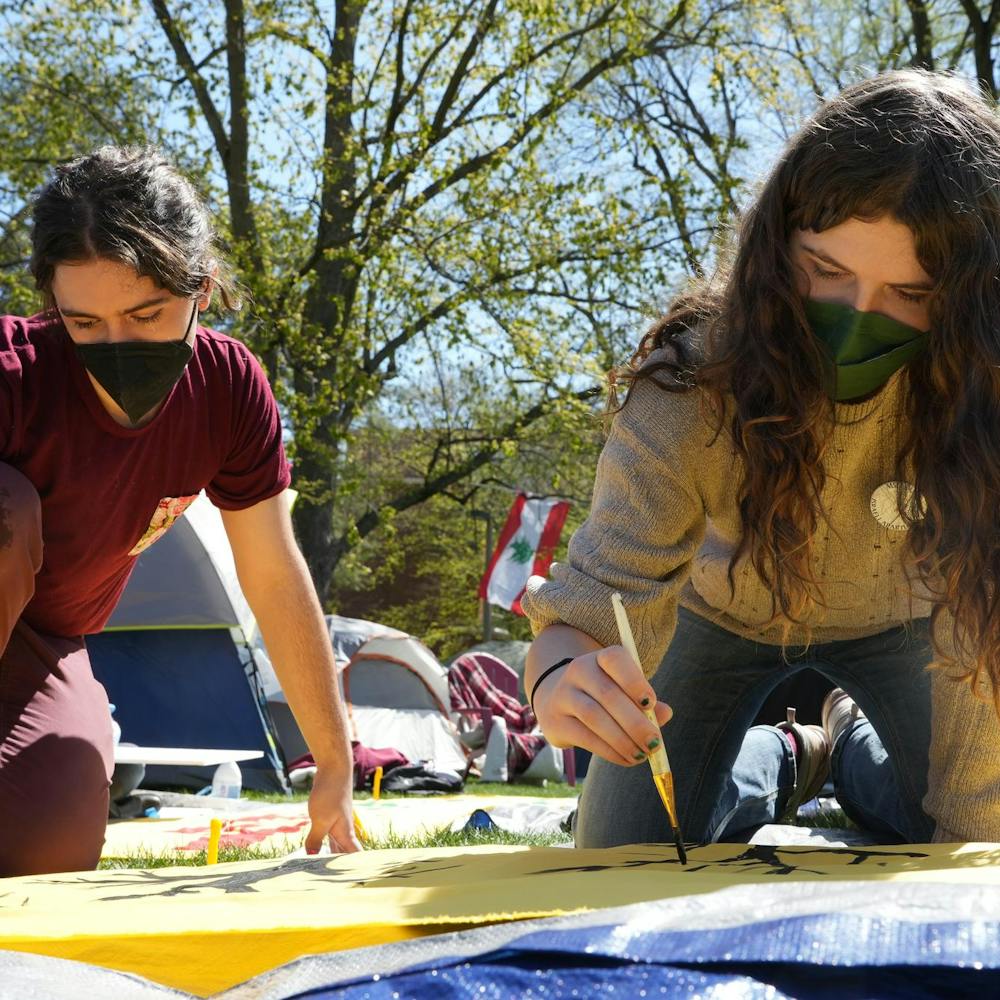Although some might choose to stick to drawing stick figures, MSU Police Officer Casey Christman works one on one with witnesses to listen to their recollection of a suspect to create a complete illustration of a suspect in a crime. Along with his normal duties as an officer, Christman began drawing composite sketches of suspects for the MSU Police Department two years ago and has completed about 15 illustrations since. During his 6 p.m. to 6 a.m. shift, Christman took some time to tell The State News what helps him put the pen to the paper.
–Kellie Rowe, The State News
The State News: How did you become the forensic artist?
Casey Christman: I’ve actually never taken any type of art class … I’ve always been able to put things down on the paper … (One day), I was sitting down at the circuit court in Lansing, bored (and) waiting for a judge. I drew the person we had arrested, and one of our training officers saw it and showed it to detectives, and they decided I should be (the) department’s forensic artist.
How do you create a composite sketch?
I look for as much detail as possible. What I’ll do is I’ll try to get a vague description of what I’m looking for, I’ll draw it (out) … and I’ll show it to the person and see how accurate they think it is. Then I’ll tweak and change it … If a nose is too long, I can erase it, shorten it up, make it wider, flare the nostrils and so on.
SN: Have you ever compared your drawing of a suspect to the person who was arrested?
CC: I’ve actually had one drawing that ended up being identical to the suspect. Typically, people with features all have certain dimensions … and with this one drawing, the head shape and the spacing and shaping of the eyes weren’t even remotely close to being typical … I sat there thinking there was no way a person could look like that. But I have to draw what the witness describes to me, as opposed to putting in my own output. I thought it was the worst drawing ever … but it ended up looking just like the person.
SN: Do you work on your drawing skills?
CC: I attend training classes put on by the state police with most of the forensic artists from across the state of Michigan … We work on drawing techniques, and people shoot ideas back and forth, ideas on styles and interview techniques.
Support student media!
Please consider donating to The State News and help fund the future of journalism.
Discussion
Share and discuss “Face Time: Casey Christman, Police sketch artist” on social media.







